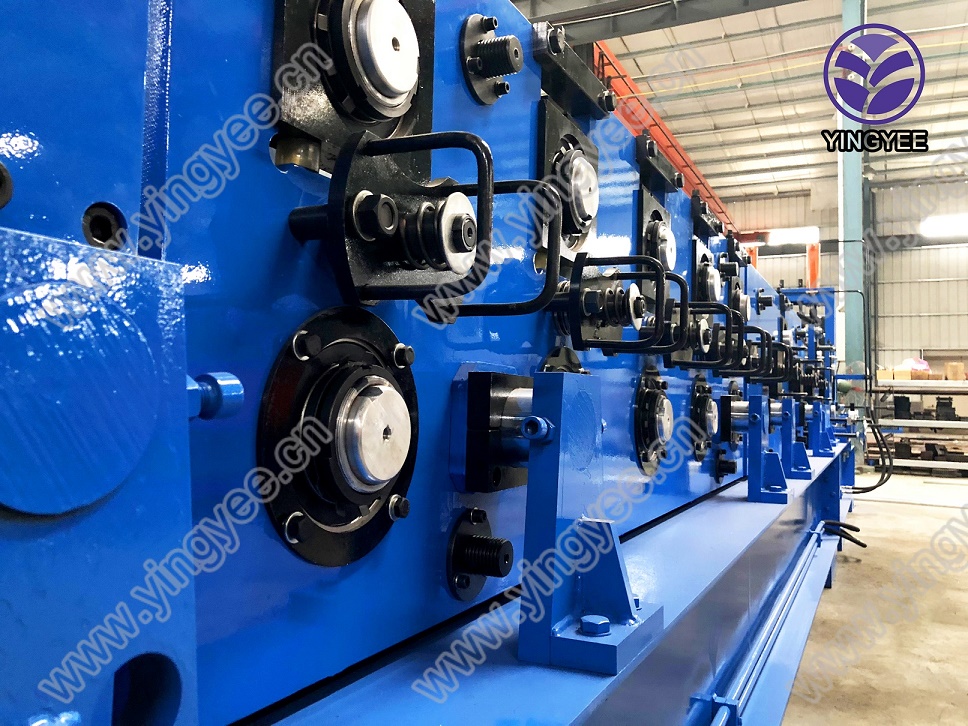
The Simple Cut-to-Length Line A Game Changer in Manufacturing
In the fast-paced world of manufacturing, efficiency and precision are paramount. One of the newer innovations that has gained traction in recent years is the simple cut-to-length line. This system has been designed to streamline processes, reduce waste, and improve overall productivity in various industries, particularly those dealing with metal, wood, plastics, and other materials.
Understanding Cut-to-Length Systems
A cut-to-length line is a manufacturing setup that takes raw materials, such as coils of metal, and transforms them into specific lengths according to the customer’s requirements. This system can be simple or complex, depending on production scale and operational demands. A simple cut-to-length line typically consists of a few key components an unwinding mechanism, a leveling device, a cutting unit, and a stacking section.
The unwinding mechanism feeds the raw material into the system and is crucial for maintaining consistent tension. The leveling device ensures that the material is flat and uniformly positioned, which is essential for precise cutting. The cutting unit then performs the actual cut, often using rotary shears or guillotine-style cutters, before the finished lengths are stacked for further processing or shipment.
Benefits of Simple Cut-to-Length Lines
1. Increased Efficiency One of the most significant advantages of a cut-to-length line is its ability to keep production flowing smoothly. The system is designed for high-speed processing, meaning that manufacturers can quickly change from one length to another without significant downtime. This agility meets market demands, especially in industries where customization is often necessary.
2. Precision and Quality Control Simple cut-to-length lines often come with advanced measurement systems that ensure each cut is made to the exact specifications. This precision minimizes the need for rework and significantly reduces material waste, leading to better overall quality of the final product.

3. Cost-Effectiveness While the initial investment in a cut-to-length line may be considerable, the long-term savings are undeniable. Reduced waste, higher production rates, and lower labor costs contribute to a more economical manufacturing process. Moreover, the ability to operate with fewer workers means that companies can allocate their resources more effectively.
4. Flexibility in Production The modular design of simple cut-to-length lines allows manufacturers to adapt to changing demands easily. Whether it’s fluctuating order quantities or variations in product specifications, these systems can be adjusted to meet immediate needs without substantial reconfiguration or capital expense.
5. Environmental Benefits In an age where sustainability is increasingly important, cut-to-length lines contribute to environmentally friendly practices by reducing scrap material. By optimizing the use of raw materials and cutting down on excess waste, manufacturers can promote a greener operation.
Applications Across Industries
The versatility of simple cut-to-length lines means they are used across a variety of sectors. In the steel and aluminum industry, these systems help produce specific lengths for construction applications, where precise dimensions are crucial. The automotive sector also utilizes cut-to-length lines for specific metal parts that require high accuracy to ensure safety and functionality. Beyond metals, the wood industry benefits similarly by producing cut-to-size lumber, vital for furniture and construction projects.
Conclusion
The simple cut-to-length line is a remarkable innovation that has reshaped modern manufacturing processes. By enhancing efficiency, precision, and cost-effectiveness, these systems align with the evolving needs of various industries. As manufacturers continue to seek ways to improve their operations, embracing technologies like the cut-to-length line will be key in maintaining competitiveness and meeting customer demands. Ultimately, this advancement in manufacturing not only optimizes productivity but also contributes to a more sustainable approach in resource management, making it a win-win for the industry and the environment alike.